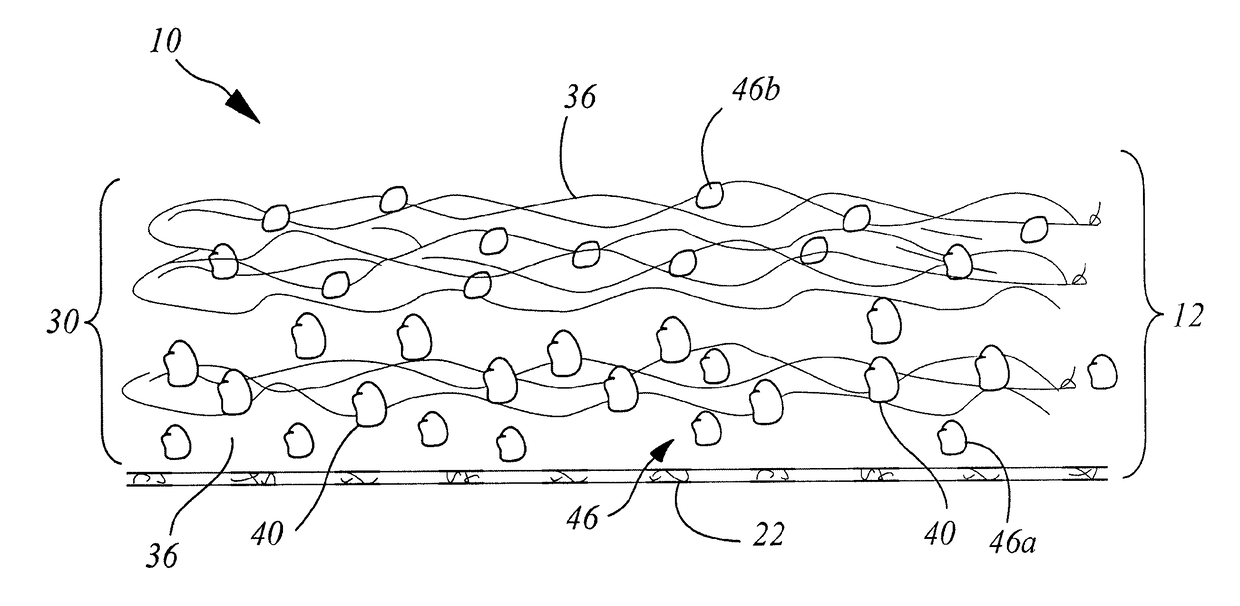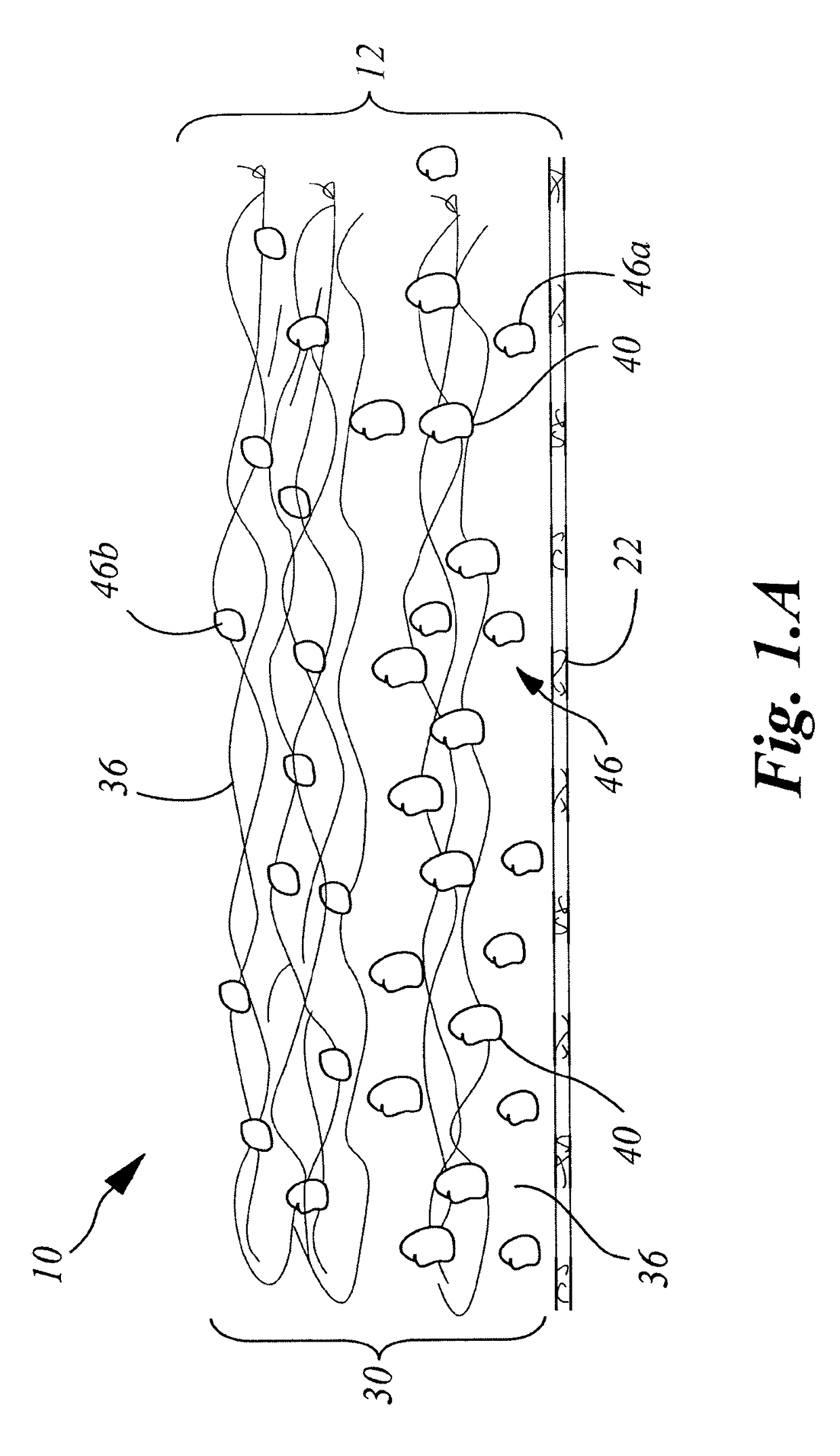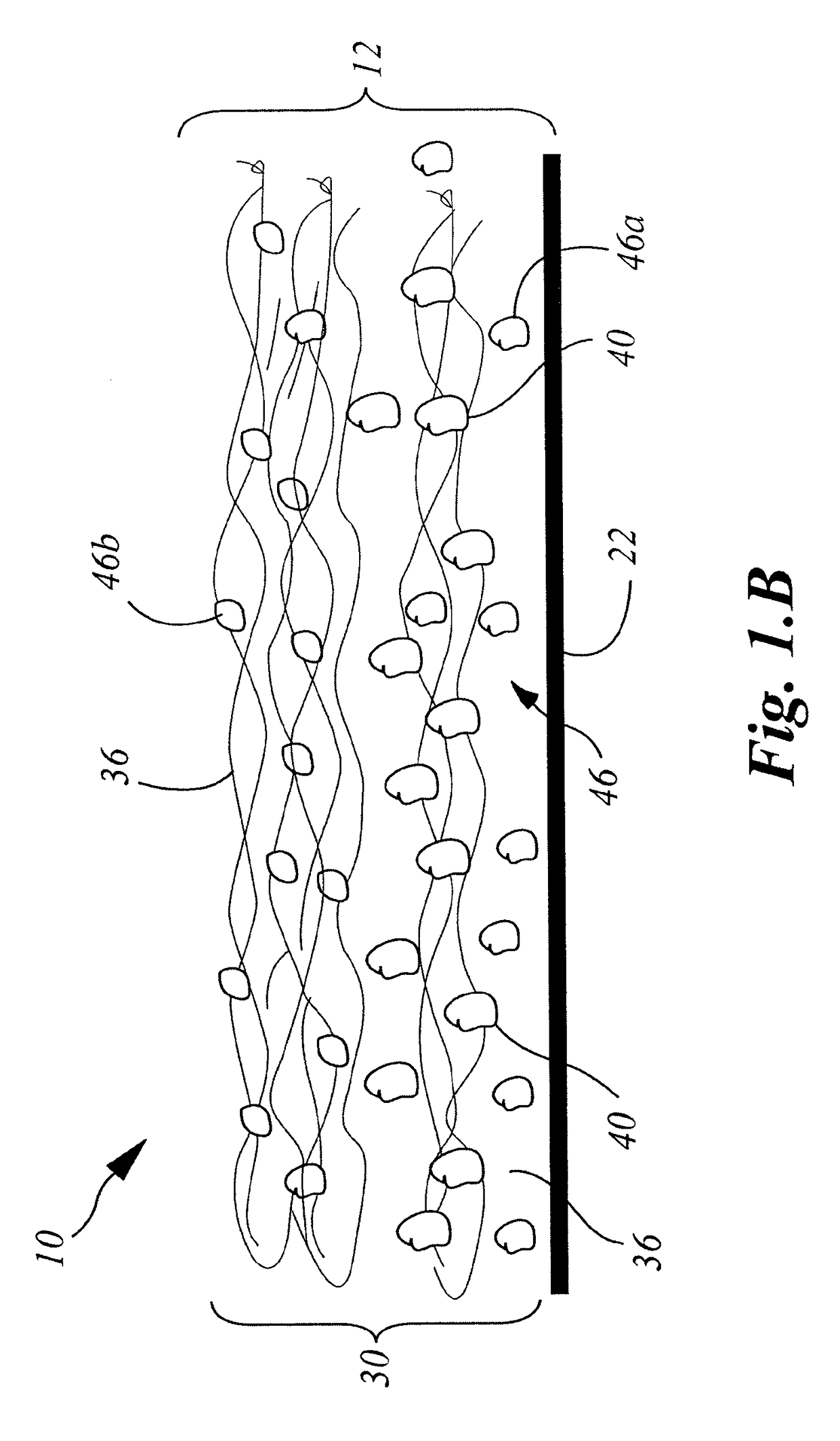Method for repair of ligament or tendon
a technology for ligaments and tendon, applied in the field of medical care devices, can solve the problems of severe limitations in mobility, pain and discomfort, rupture or tear, etc., and achieve the effect of promoting ligament or tendon regeneration
- Summary
- Abstract
- Description
- Claims
- Application Information
AI Technical Summary
Benefits of technology
Problems solved by technology
Method used
Image
Examples
example 1
tch Preparation
[0200]A collagen sheet 22 (Xenoderm—porcine type 1 and 3 collagen) was used as the support layer 22. The support layer had mechanical properties to resist shear and pull stress and was resorbable in about 6 weeks. The collagen sheet 22 was put into a form, and then loaded with a collagen-HA suspension to which was added either a solution of Diacerein or Diacerein powder to obtain an amount of 0.3-75 μg in dry-weight in the patch after freeze-drying and sterilization. The result was a double layered collagen-pad with the support layer to be disposed on the injured ligament / tendon site. After manufacturing and before sterilization, the pads were put into a mechanical press to obtain a thickness of 0.5-2 mm. HA-concentration in the dry-frozen end product was in the range of about 0.1% to 2%. The HA is natural HA, that is, non-chemically modified HA, of fermentation origin.
example 2
n of a Pericardial Membrane
1. Recovery of Raw Material from Bovine Origin
[0201]The bovine heart sacs (pericards) employed as the starting material, after the conventional meat inspection by an official veterinarian in the abattoir, first are separated from attached organ parts and grossly rid of fat and connective tissue. Thereby, sheet-like pieces of approximately 30 cm×15 cm in size and a weight of about one kilogram per piece are obtained. The bovine pericards having been thus prepared are transported in a cold bag loaded with ice from the abattoir to the production site and, depending on the amount of the raw material recovered, intermediately stored there at below −20° C. before they are further processed.
2. Wet-Chemical Processing
[0202]The raw pericard pieces first were individually rinsed with purified water, usually soaked with running water, to remove adherent blood and water-soluble protein portions. After soaking, all macroscopically visible residues of fat tissue and bas...
example 3
on of Fibroblasts on the Flexible and Bio-Compatible Repair Patch
[0209]In order to determine cell viability during cultivation of fibroblasts on the repair patch of the present invention the human dermal fibroblast cell line WS 1 was used. This cell line was grown under standard conditions (37° C., 5% CO2) in Dulbecco's Modified Eagle Medium (DMEM) and 10% of fetal calf serum (FCS).
[0210]The fibroblasts were transferred to the repair patch of the present invention and a reference material and were cultivated over a time period of up to 5 weeks under standard conditions (37° C., 5% CO2) in DMEM. To determine the cell proliferation rate WST 1 assays were used. This assay is a colorimetric assay for measuring the activity of cellular enzymes that reduce a tetrazolium dye, WST 1, to its insoluble formazan, giving a purple color. In addition, medium samples were analyzed by ELISA to determine their pro-collagen type I concentrations. Cell viability was analyzed once a week by live / dead c...
PUM
| Property | Measurement | Unit |
|---|---|---|
| thickness | aaaaa | aaaaa |
| molecular weight | aaaaa | aaaaa |
| molecular weight | aaaaa | aaaaa |
Abstract
Description
Claims
Application Information
 Login to View More
Login to View More - R&D
- Intellectual Property
- Life Sciences
- Materials
- Tech Scout
- Unparalleled Data Quality
- Higher Quality Content
- 60% Fewer Hallucinations
Browse by: Latest US Patents, China's latest patents, Technical Efficacy Thesaurus, Application Domain, Technology Topic, Popular Technical Reports.
© 2025 PatSnap. All rights reserved.Legal|Privacy policy|Modern Slavery Act Transparency Statement|Sitemap|About US| Contact US: help@patsnap.com



